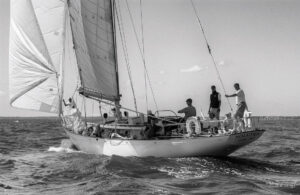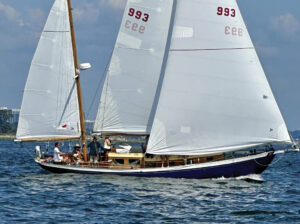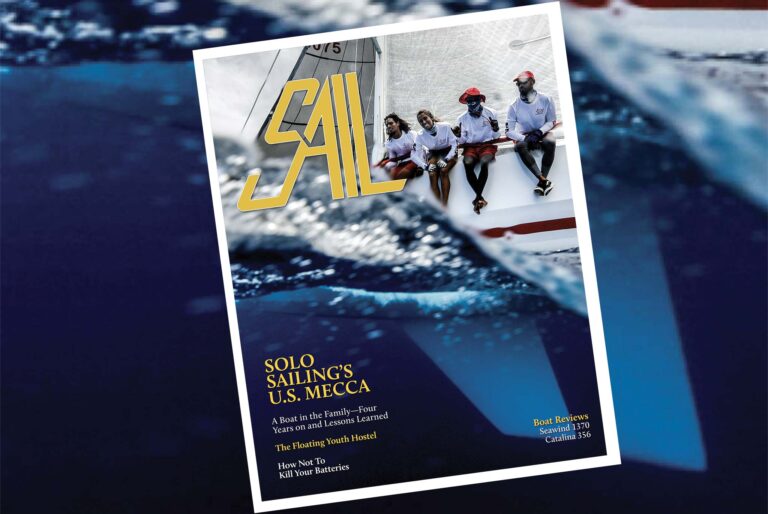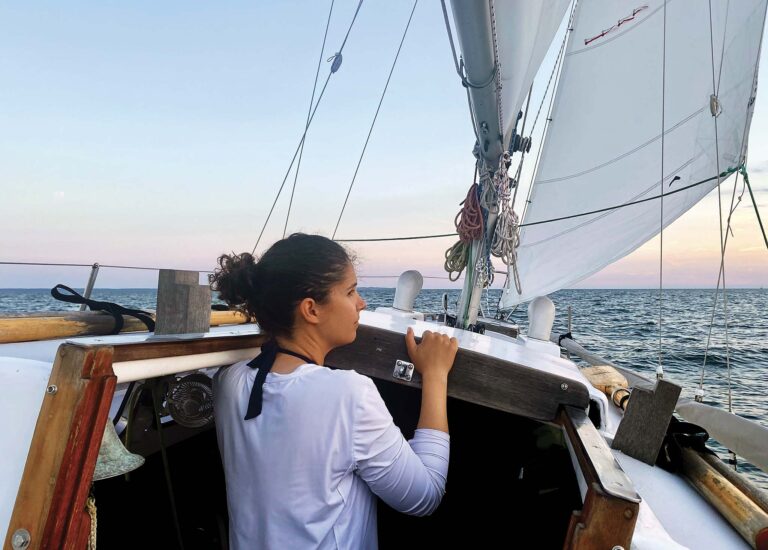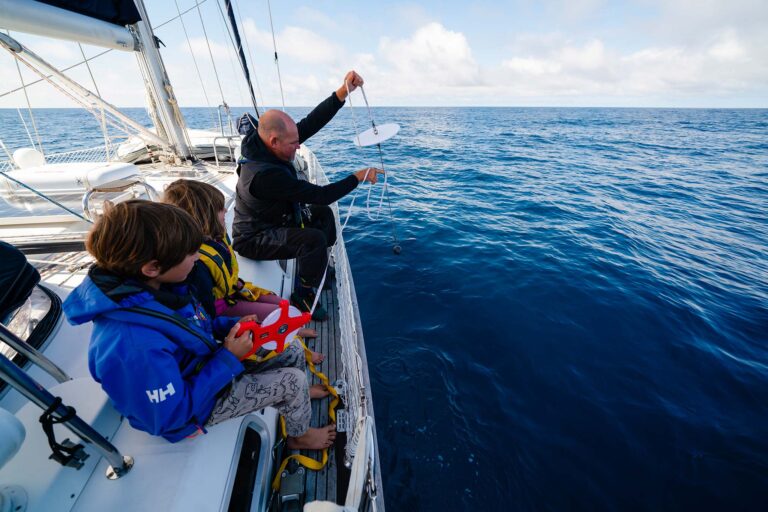
Back in the 1930s, the next most important match racing event in competitive sailing after the America’s Cup didn’t involve yachts but fishing vessels. The Sir Thomas Lipton International Fishing Challenge Cup enjoyed only a brief tenure, but commanded major media attention at the time. Effectively a grudge match sailed between Canadian and American Grand Banks fishermen, the event was run just three times, and each time featured the same two competitors, the famed Canadian schooner Bluenose and the American schooner Gertrude L. Thebaud.
Bluenose was renowned for her speed, but the Thebaud crew pulled off a great upset in 1930 when it defeated its Canadian rivals 2-0 in the first series. Bluenose had her revenge, though, besting Thebaud 2-0 the following year. The very last event, a best-of-five series sailed out of Gloucester, Massachusetts, in October 1938, was by far the most dramatic. Thebaud, in moderate weather, barely managed to win the first race by 30 seconds, but in the second her navigator got lost, and Bluenose romped to an easy victory. As an antidote, Thebaud’s skipper called a young 22-year-old mastheadman, Sterling Hayden, down from his regular post and anointed him navigator for the third race, which was sailed in an easterly gale.
In driving wind and almost zero visibility—this in the days before GPS and other such magic—Hayden somehow managed to find the windward mark after a raucous 15-mile beat, and so led Thebaud to a 2-1 lead over her rival. As Hayden remembered it in his autobiography, when the great schooners tacked you could hear the canvas flogging halfway to Boston, and he was as surprised as anyone when the buoy he sought showed up dead ahead. “I sauntered aft,” he wrote, “looking the world in the eye, vindicated, my belly afire with pride.”
Alas, Bluenose took the next two races and won the series 3-2. But for Hayden, the event transformed his life, as the Boston press, which covered the racing avidly, took special notice of his striking appearance. “More than a few of the scores of women who viewed the vessels inquired as to his identity,” wrote the Boston Post. The dogs of celebrity were let loose and Hayden soon was working as a magazine model. From there he signed a film contract with Paramount Pictures, which hailed him as the “Most Beautiful Man in the Movies.”
Hayden appeared in more than 35 films during the course of his career, most of which were released during the 1940s and 1950s. He was best known in his prime for his leading roles in westerns and noir films, such as The Asphalt Jungle and Johnny Guitar, and later gained more notoriety playing supporting roles in Dr. Strangelove and The Godfather. But Hayden always despised the film industry, and he despised himself for falling prey to it. “I spent a lifetime selling out,” he once wrote. “I always hated acting, but I kept on acting…a commuter on a tinsel train.”
Hayden always yearned to return to the sea, and the whole point of his career in Hollywood, as he saw it, was to earn the cash he needed to do so. “Wind to a sailor is what money is to a life on shore,” as he put it. And with that wind he bought himself a 98ft antique San Francisco pilot schooner, named it Wanderer, and in 1959 became the talk of tabloids everywhere when, in defiance of a court order, he kidnapped his four children from a failed marriage and sailed off to Tahiti and beyond.
Hayden had many other adventures during his varied life, including serving as an OSS agent behind enemy lines during World War II, and at the end of it was grateful to have an opportunity to again walk the deck of a Grand Banks fishing schooner.
This was Bluenose II, a replica of the original Bluenose, which appeared in San Francisco during an extended cruise in 1986. Hayden spent a day sailing the bay as a guest of the schooner’s crew and no doubt recalled the pride that lit him up during that distant gale-ridden day off Gloucester. Just a few months later, unfortunately, he died of cancer and so passed on to a place where neither wind nor money could do him any good.
April 2018



